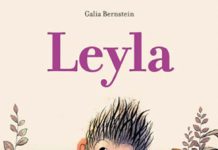Writing about drought in the garden usually makes it rain. Let’s hope it does this month, as the unrelenting steady wind day and night is causing stress on all fronts in spite of some meagre rainfall.
We watered our broad beans when flowering to encourage fruit set, and then left them to it. The dry soil and stressed plants saw the blackfly aphid arrive really early in late May. There were already ants eating them, but the sign of a dry spring is that pests breed faster than their predators. Even though we pinched out the tops, the fly managed to get stuck into a few main plant stems, requiring occasional extra stem removal. We watered them again and the yields have been marvellous, but still lots of bean weevils nibbling the leaf edges, which is always a sign of water stress.
This is typical of the stress all plants, especially new ones without deep roots, are experiencing. Aphids also spread disease, so watering your plants is vital. People with allotments often face stiff opposition from landlords about supplying water. This is party because of wastage with sprinklers but occasional irrigation is a vital ingredient for successful growing.
Mulching your soil with a layer of compost or manure helps. Keeping weeds down stops them using water too. Twenty years ago we were given a huge old water tank. It is right next to my vegetables, filled from a barn roof, and is now my best friend.
Using water sparingly is sensible, watering cans make you waste less than hoses and much less than the dreaded sprinkler system. Use just enough water to keep the plant happy yet still encourage it to put its roots down further into the soil.
Generally all fruiting vegetables such as courgettes and french beans will set fruit better when watered at flowering time. As there are around 3,245.566 km2 of irrigated crops grown in the world, it must be better to water your crops at home—not your lawn—using tap water if you have to.
On the plus side, there have been very few slugs around this year, so most germination problems have been with underwatering. In our garden blackbirds have been seen desperate for moist soil, both to scratch in and to build nests with, which helps explain annoying gaps in my carrot bed.
What to sow now
Many crops can be sown or transplanted in early July. Transplant French beans and cress, bulb fennel, endive, swede and radicchio, the latter for colourful autumn salads.
Most lettuce are prone to mildew from now on, except Little Gem lettuce, which can be sown as late as August. Also brassicas such as late calabrese, spring cauliflower, kale, purple sprouting, and Pak Choi for hearting.
If you think we will have a warm autumn, all these and carrots can be sown from seed early this month too. And, although you have been told this before, when does it rain money? When there’s change in the weather.









